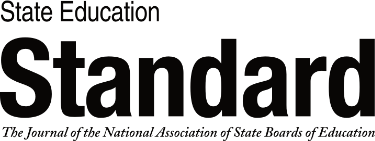Children across the nation lack access to high-quality pre-K programs that can support their development and build foundational skills for elementary school. The pandemic set pre-K enrollment and funding back further, with an enrollment decline of nearly 300,000 children and state spending remaining relatively flat. As children and families return to public pre-K, state policymakers must focus on investing in program expansion and strengthening quality. Those efforts should start with a pre-K teacher workforce that is well prepared and fairly compensated.
Teacher preparation is quickly changing, with new models emerging to develop more accessible, affordable, flexible pathways. We will describe four of these approaches: allowing community colleges to confer bachelor’s degrees, supporting paid work-based training through registered apprenticeships, funding grow-your-own programs that remove barriers for teachers within communities, and encouraging institutions of higher education (IHEs) to collaborate on developing aligned, articulated pathways.
Preparing Pre-K Teachers: Policy Considerations and Strategies
Also In this Issue
Five Trends Shaping the Teaching Force
By Richard M. Ingersoll, Elizabeth Merrill, Daniel Stuckey, Gregory Collins and Brandon HarrisonState policymakers looking to increase recruitment and retention should keep an eye on these long-term trends.
The Uneven Landscape of Teacher Preparation
By Leslie T. FenwickState statutes impede students' equitable access to profession-ready teachers.
A Data-Driven Approach to Staffing Schools
By Hannah Putman and Heather PeskeLowering teacher standards may fail to solve actual pipeline problems and can create new ones.
Licensure Tests as Barriers to the Profession
By Victoria Van CleefStates should explore better means of assessing teachers' classroom readiness.
Teacher Preparation for Whole-Child Design
By Jennifer DePaoli and Ryan SaundersState leaders have a role in ensuring that educator preparation both models and reflects the science of learning and development.
Teacher Recruitment and Retention in Missouri
By Paul KatnikState leaders commit to efforts to attract and keep teachers in the classroom.
Ensuring Equity in Grow-Your-Own Programs
By Conra D. GistState-level criteria for programs' design can yield better outcomes in preparing and retaining diverse teachers.
Creating State Education Systems That Value Student Cultures
By William Rodick and Tanji Reed MarshallState boards can set the stage for learning environments that connect and engage all students.
Preparing Pre-K Teachers: Policy Considerations and Strategies
By Amaya Garcia and Cara SklarFour practices to increase the pool of skilled early educators stand out as promising.











 i
i
 i
i
 i
i